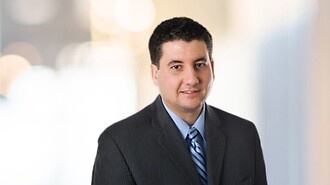
In construction or similar ongoing projects, problems often pop up. Sometimes they can pop up again and again. Making things even more complicated, one problem may affect another, seemingly new problem. When these construction problems result in property damage, timelines tend to overlap and determining when a statute of limitation begins to run for a particular claim can be difficult. Especially in states with short statute of limitations for tort claims like Texas, knowing when a statute begins to run is crucial for a subrogation professional.
In Hussion St. Bldgs., LLC v. TRW Eng’rs, Inc., No. 14-20-00641-CV, 2022 Tex. App. LEXIS 2193, 2022 WL 1010313, the Court of Appeals of Texas provided clarity on when the two-year statute of limitations for tort claims begins to run. Reversing the judgment from the lower court, the appellate court denied summary judgment to the defendant, holding that, despite there being existing issues with the ongoing construction project, the negligence cause of action for Hussion Street Buildings, LLC (Hussion) did not begin to run more than two years prior to filing suit.
This case arises from a housing development project undertaken by various parties, collectively referred to as the Housing County Housing Authority (HCHA). The project was known as the Fenix Estates Project and took place next door to real property and a warehouse owned by Hussion. HCHA retained Qualified Construction, Inc. (Qualified) to construct the project and TRW Engineers, Inc. (TRW) as the engineer for the project. In September of 2017, Qualified allegedly severed a sewer line to Hussion’s property and, in response, Hussion filed suit against Qualified and HCHA for injunctive relief. The court in that case denied the relief being sought by Hussion.
Construction on the Fenix Estates Project continued and TRW was tasked with providing a water detention program. According to Hussion, TRW failed to do so, resulting in water or mud intrusion onto its property beginning on May 5, 2018. Hussion filed suit against TRW in March of 2020 for negligence, gross negligence, professional negligence and breach of fiduciary duty as a result of the property damage it sustained. TRW moved for summary judgment on the grounds, inter alia, that Hussion’s negligence claim was barred by the two-year statute of limitations. The lower court granted summary judgment.
Hussion claimed that there were four separate occasions where water intruded onto its’ property as a result of TRW’s actions. TRW claimed that, because Hussion previously filed suit for injuries from the project in 2017, the statute of limitations began to run at that time and thus two years had already passed by the time it filed suit against TRW in 2020.
Because Hussion did not claim water damage in 2017, only threats of damage, the appellate court held that the statute did not begin to run at that time. Moreover, each of the four occasions on which Hussion claimed water damage occurred were within the two-year statute of limitations period. Thus, the negligence claim was not barred.
In its decision, the appellate court held that the statute of limitations does not run when damage to property is possible or even likely, but at the first occurrence. It further extrapolates that when there is an ongoing “nuisance” type claim, the first step in a statute of limitations analysis is to determine if the nuisance is temporary or permanent. If it is permanent, there is a single cause of action that runs when the injury is first discovered. If it is temporary, a new cause or action begins to run at each occurrence.
As all subrogation professionals know, having clarity on when a statute of limitations or statute of repose runs is not just important, but necessary for proper claim handling. When clarity is complicated by complex construction, diligent fact-finding becomes essential. Speaking with as many people as possible with knowledge of the facts of the claim will help establish a strong timeline upon which to base a statute of limitations analysis. Of course, when that information is not available either because it lies with adverse parties or some other reason, filing suit to stop the clock may be the safest approach.
Recent Posts
Categories
- Subrogation
- Products Liability
- Economic Loss Rule
- CPSC Recalls
- Construction Defects
- Damages
- Contracts
- Statute of Limitations-Repose
- Evidence
- Illinois
- Negligence
- Litigation
- New York
- Texas
- Limitation of Liability
- Experts – Daubert
- Colorado
- Virginia
- Massachusetts
- Experts - Reliability
- South Carolina
- New Jersey
- Certificate of Merit
- California
- Anti-Subrogation Rule
- Jurisdiction
- Landlord-Tenant
- Sutton Doctrine
- Maryland
- Waiver of Subrogation
- Uncategorized
- Pennsylvania
- Indemnification
- Causation
- Florida
- Condemnation
- CPSC Warning
- Minnesota
- Rhode Island
- Cargo - Transportation
- Malpractice
- Spoliation
- Tennessee
- Indiana
- Michigan
- Comparative-Contributory Negligence
- Contribution-Apportionment
- AIA Contracts
- Product Liability
- Arbitration
- Assignment
- Missouri
- Parties
- Public Policy
- Civil Procedure
- Res Judicata
- Damages – Personal Property
- West Virginia
- Wyoming
- Oklahoma
- Builder's Risk
- Contractual Subrogation
- Equitable Subrogation
- Georgia
- Insurable Interest
- Mississippi
- Made Whole
- Delaware
- Settlement
- Subrogation – Equitable
- Construction
- Premises Liability
- Joint or Several Liability
- Montana
- Duty
- Privity
- New Mexico
- Right to Repair Act
- Building Code
- Landlord
- Tenant
- Arizona
Tags
- Subrogation
- Products Liability
- Construction Defects
- Economic Loss Doctrine
- Illinois
- Damages
- Product Liability
- Contracts
- Evidence
- Construction Contracts
- Texas
- Statute of Limitations
- Negligence
- Statute of Repose
- Spoliation
- Cyber Subrogation
- Limitation of Liability
- New York
- Waiver of Subrogation
- Architects-Engineers
- Landlord-Tenant
- Statute of Limitations – Discovery Rule
- CPSC Recalls; Products Liability
- Massachusetts
- Circumstantial Evidence
- Experts - Reliability
- Experts – Daubert
- New Jersey
- Colorado
- Litigation
- Oklahoma
- Certificate of Merit
- Incorporation by Reference
- Virginia
- Indemnification
- Experts
- Maryland
- Economic Loss Rule
- Amazon-eBay
- Contracts - Enforcement
- Malfunction Theory
- Pennsylvania
- Georgia
- Louisiana
- California
- Civil Procedure
- Jurisdiction
- Jurisdiction - Personal
- Gist of the Action
- Sutton Doctrine
- Florida
- Public Policy
- Causation
- Arizona
- Indiana
- Anti-Subrogation Rule
- Condemnation
- Inverse Condemnation
- Tennessee
- West Virginia
- Negligent Undertaking
- Statute of Limitations - Contractual
- Minnesota
- Statute of Limitations - Accrual
- Delaware
- Experts – Qualifications
- Improvement
- Negligence – Duty
- Connecticut
- Apportionment
- Privity
- Rhode Island
- Design Defect
- Statute of Limitations - Tolling
- Expert Qualifications
- Malpractice
- Amazon
- Evidence - Hearsay
- Made Whole
- Loss of Use
- Vehicles
- Settlement
- workers' compensation subrogation
- Warranty - Implied
- Michigan
- Comparative Fault
- Water Damage
- Contracts - Formation
- Condominiums
- Non-Party at Fault
- Malfunction Theory; Design Defect
- Independent Duty
- Ohio
- Arbitration
- Wisconsin
- Unconscionable
- Missouri
- Parties
- Failure to Warn
- Manufacturing Defect
- Pleading
- Removal
- Entire Controversy Doctrine
- Motion to Intervene
- Res Judicata
- Subrogation; High-Net-Worth; Damages; Art; Cargo-Transportation; Anti-Subrogation Rule
- Products Liability – Risk-Utility
- Lithium-ion battery
- Internet Sales
- Anti-Subrogation Rule; Wyoming; Landlord-Tenant; Sutton Doctrine
- Sanctions
- Spoliation – Fire Scene
- Builder’s Risk
- Contractual Subrogation
- Equitable Subrogation
- Exculpatory Clause
- Gross Negligence
- Insurable Interest
- Mississippi
- Daubert
- Standing
- Third Party
- Accepted Work
- Montana
- Independent Contractor
- Res Ipsa
- New Mexico
- Right to Repair Act
- AIA Contract
- Betterment
- Damages-Code Upgrades
- Statute of Limitations - Repose
- Washington
- Implied Warranty of Habitability
- Warranty - Construction
- Idaho
- Joint-Tortfeasors
- Forum-Venue
- Warranty – Express
- AIA Contracts
- Anti-Indemnity Statutes
- Products Liability - Foreseeability
- Cargo-Transportation
- Contribution
- MCS-90
- Substantial Completion
Authors
Archives
- November 2025
- September 2025
- August 2025
- July 2025
- May 2025
- April 2025
- March 2025
- February 2025
- January 2025
- December 2024
- November 2024
- October 2024
- September 2024
- August 2024
- July 2024
- June 2024
- May 2024
- April 2024
- March 2024
- February 2024
- January 2024
- December 2023
- November 2023
- October 2023
- September 2023
- August 2023
- July 2023
- June 2023
- May 2023
- April 2023
- March 2023
- February 2023
- January 2023
- December 2022
- November 2022
- October 2022
- September 2022
- August 2022
- July 2022
- June 2022
- May 2022
- April 2022
- March 2022
- February 2022
- January 2022


